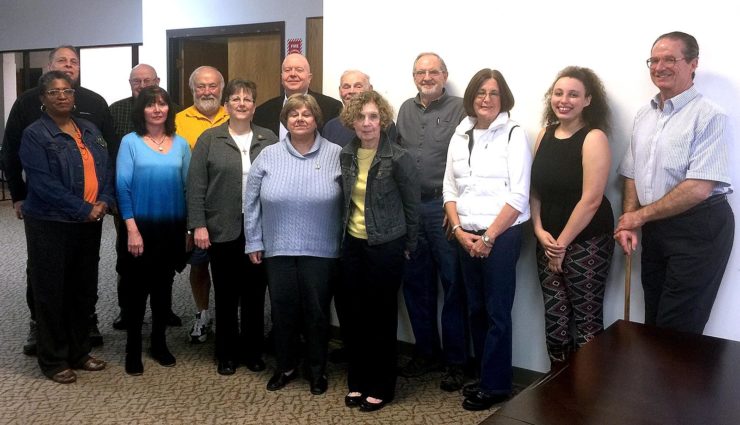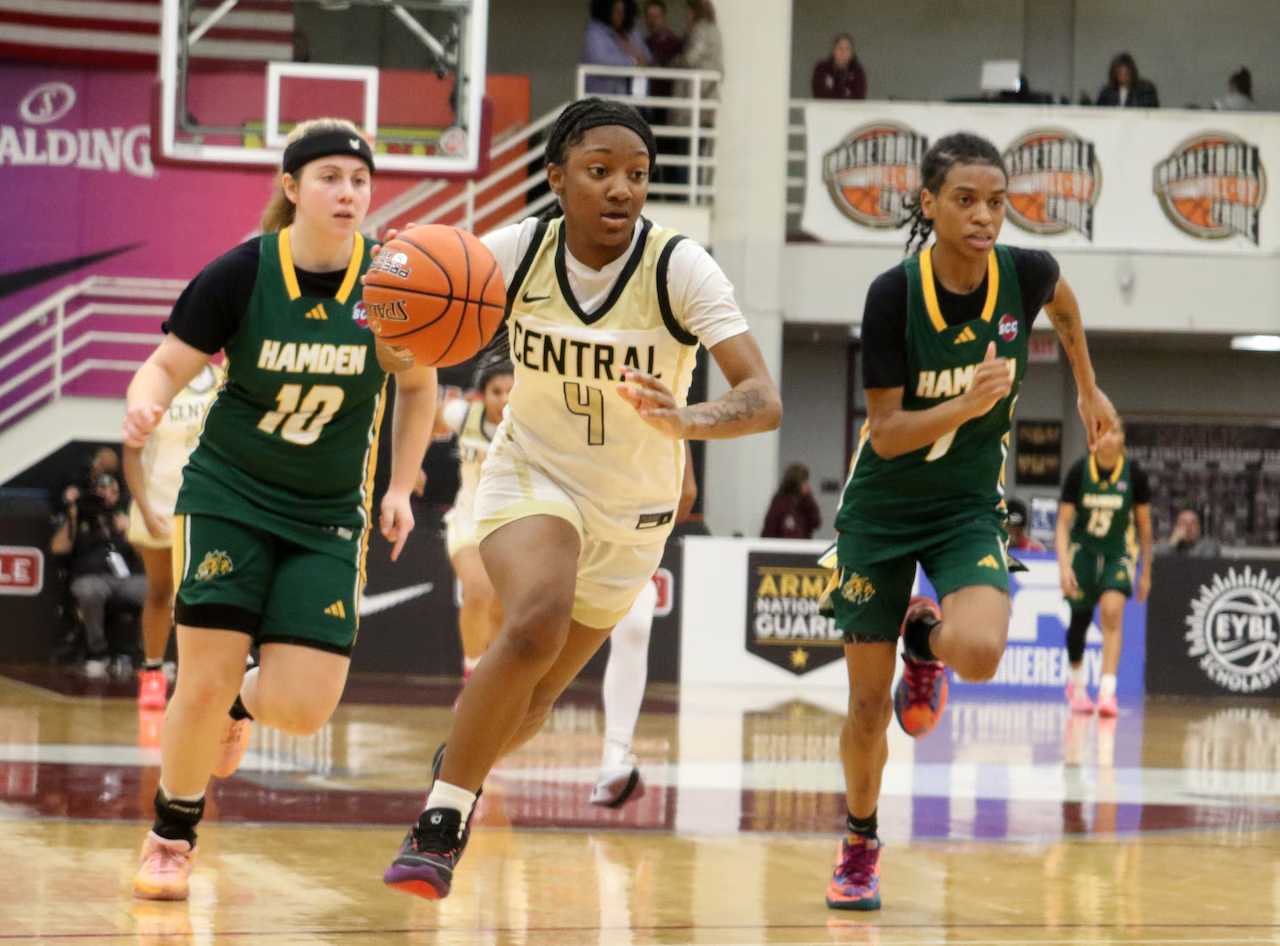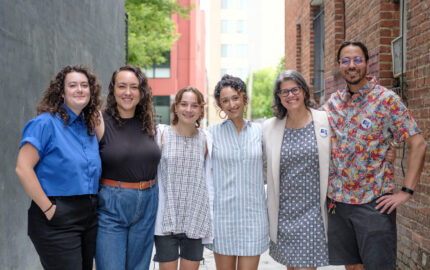Most editors get lots of feedback from readers—through calls, emails, or comments in social media.
For the past two years, though, The [Springfield, Illinois] State Journal-Register has had a special group of readers who are specifically tasked with providing us with feedback.
In April 2015, we named our first Reader Advisory Board. The boards have served one-year terms; our third group has its kickoff meeting this month.
Our reader board meets monthly at the SJR offices. Meetings have followed a two-part agenda: The first half of the meeting is always open floor, for them to offer feedback on what they liked or didn't like, or to ask questions about why something was handled the way it was.
The second half of the meeting features a "behind the scenes" presentation by me or another member of our staff, such as the advertising director, the sports editor, the editorial page editor or the photo editor.
The members take their duties seriously, often arriving with folders of clippings. Many of them also email or call me with feedback in between the meetings (which I log and recap at the next meeting).
In some cases, I've given them homework, such as critiquing a particular section or evaluating syndicated content offerings we're considering.
That part has been eye-opening for them, as they've seen firsthand how diverse readers' opinions can be. In one memorable session, I tasked the board with suggesting ways to improve our community news section in Sunday's paper. About half the group wanted to drop certain features; the other half was aghast at their suggestions, protesting about how much they loved them.
"No matter what you do, someone isn't going to like it," one advisory board member summed it up at the end of that debate.
The reader board is still evolving—every session, we strive to improve how it functions. But some of the lessons we've learned over the past two years include:
Have structure, but be ready to ditch your plan. I've found that meetings require some theme or structure, to avoid too much meandering conversation or running out of something to say. That's one of the reasons we've opted to always include a presentation by a staff member.
However, I've also learned that there are times when you need to toss your agenda and go with the discussion when it's lively and taking you down a path of discovery.
Our board's January meeting was a prime example; I'm not sure in hindsight why I believed our members would want to talk about anything other than President Trump, his contentious relationship with the media and the phenomenon of "fake news." But that's what we talked about for well past the normal ending time.
Don't fear the curmudgeon. On each Reader Board, at least one applicant has said in their pitch that they didn't expect to get picked because they listed a lot of complaints. I chose all of those folks, some of whom I already knew slightly from their calls or letters.
My thinking has been that readers who care enough to complain are engaged readers. We want to be held to a high standard. It's not always fun to hear where we might be falling short, but it gives an opportunity to help improve.
Diversity is a must. With each board, I've tried to make sure we have diversity in race, gender, and age. Equally important has been political diversity. Worthwhile dialogue happens when a die-hard liberal and a Trump enthusiast struggle to comprehend and explain to each other how each can read the same story and come away with opposite impressions.
Our first board included a 60-something, very conservative rural-dwelling retiree and a 20-something liberal, downtown resident. They disagreed on pretty much every political issue—but often were on the same side of many debates about news coverage. I couldn't have been happier when the older member called to report that the two of them had met independently for coffee, and had had a wonderful discussion.
Feedback from members invariably has included how much they enjoyed getting to know people they might not otherwise have met. They didn't expect it as part of the program, but it's been a valuable bonus.
Make it interactive. I recently participated in our local FBI office's Citizens Academy, and came away with an appreciation for how experiencing something firsthand can help you understand the challenges involved. While I can't offer the drama of virtual reality "shoot-don't shoot" exercises, we've still found that hands-on experiences have been very popular.
Both reader boards so far have participated in a "You Be the Editor" session, in which I divided the board into small groups, gave them scenarios based on actual ethical dilemmas our newsroom has encountered and asked them to decide what to do—on deadline, of course—and explain why they arrived at that conclusion. We then discuss what the SJR did, and why.
For the next reader board, I'm planning to add a simulation on what it's like to be a reporter covering breaking news, in hopes that it will illustrate the many tasks journalists juggle. Another session will give the board the chance to play editor, by giving them a story lineup and access to real-time analytics, and asking them to prioritize the website homepage and select the next day's print front page.
There are times that having a reader board has been challenging. It's not fun to stand before a group of readers and say we messed up, or fell short—but there have been times where we have. You have to be prepared to admit that and take your lumps when that happens, but I've also found that readers are more accepting when you're straightforward about mistakes.
By the same token, it's uplifting to get the chance to get to know readers who have been SJR subscribers for decades and who really believe in the value of local news. Even when they criticize, they do so because they want to see the paper succeed.
The biggest benefit is that our reader board members have become ambassadors—I often hear from someone who's been referred to us by an advisory board member. Other times, I've even seen them jump into Facebook discussions to explain or defend the newspaper on how we handled an issue.
The program takes work—but it's been time well spent in forging a deeper connection with our audience.
For the past two years, though, The [Springfield, Illinois] State Journal-Register has had a special group of readers who are specifically tasked with providing us with feedback.
In April 2015, we named our first Reader Advisory Board. The boards have served one-year terms; our third group has its kickoff meeting this month.
Our reader board meets monthly at the SJR offices. Meetings have followed a two-part agenda: The first half of the meeting is always open floor, for them to offer feedback on what they liked or didn't like, or to ask questions about why something was handled the way it was.
The second half of the meeting features a "behind the scenes" presentation by me or another member of our staff, such as the advertising director, the sports editor, the editorial page editor or the photo editor.
The members take their duties seriously, often arriving with folders of clippings. Many of them also email or call me with feedback in between the meetings (which I log and recap at the next meeting).
In some cases, I've given them homework, such as critiquing a particular section or evaluating syndicated content offerings we're considering.
That part has been eye-opening for them, as they've seen firsthand how diverse readers' opinions can be. In one memorable session, I tasked the board with suggesting ways to improve our community news section in Sunday's paper. About half the group wanted to drop certain features; the other half was aghast at their suggestions, protesting about how much they loved them.
"No matter what you do, someone isn't going to like it," one advisory board member summed it up at the end of that debate.
The reader board is still evolving—every session, we strive to improve how it functions. But some of the lessons we've learned over the past two years include:
Have structure, but be ready to ditch your plan. I've found that meetings require some theme or structure, to avoid too much meandering conversation or running out of something to say. That's one of the reasons we've opted to always include a presentation by a staff member.
However, I've also learned that there are times when you need to toss your agenda and go with the discussion when it's lively and taking you down a path of discovery.
Our board's January meeting was a prime example; I'm not sure in hindsight why I believed our members would want to talk about anything other than President Trump, his contentious relationship with the media and the phenomenon of "fake news." But that's what we talked about for well past the normal ending time.
Don't fear the curmudgeon. On each Reader Board, at least one applicant has said in their pitch that they didn't expect to get picked because they listed a lot of complaints. I chose all of those folks, some of whom I already knew slightly from their calls or letters.
My thinking has been that readers who care enough to complain are engaged readers. We want to be held to a high standard. It's not always fun to hear where we might be falling short, but it gives an opportunity to help improve.
Diversity is a must. With each board, I've tried to make sure we have diversity in race, gender, and age. Equally important has been political diversity. Worthwhile dialogue happens when a die-hard liberal and a Trump enthusiast struggle to comprehend and explain to each other how each can read the same story and come away with opposite impressions.
Our first board included a 60-something, very conservative rural-dwelling retiree and a 20-something liberal, downtown resident. They disagreed on pretty much every political issue—but often were on the same side of many debates about news coverage. I couldn't have been happier when the older member called to report that the two of them had met independently for coffee, and had had a wonderful discussion.
Feedback from members invariably has included how much they enjoyed getting to know people they might not otherwise have met. They didn't expect it as part of the program, but it's been a valuable bonus.
Make it interactive. I recently participated in our local FBI office's Citizens Academy, and came away with an appreciation for how experiencing something firsthand can help you understand the challenges involved. While I can't offer the drama of virtual reality "shoot-don't shoot" exercises, we've still found that hands-on experiences have been very popular.
Both reader boards so far have participated in a "You Be the Editor" session, in which I divided the board into small groups, gave them scenarios based on actual ethical dilemmas our newsroom has encountered and asked them to decide what to do—on deadline, of course—and explain why they arrived at that conclusion. We then discuss what the SJR did, and why.
For the next reader board, I'm planning to add a simulation on what it's like to be a reporter covering breaking news, in hopes that it will illustrate the many tasks journalists juggle. Another session will give the board the chance to play editor, by giving them a story lineup and access to real-time analytics, and asking them to prioritize the website homepage and select the next day's print front page.
There are times that having a reader board has been challenging. It's not fun to stand before a group of readers and say we messed up, or fell short—but there have been times where we have. You have to be prepared to admit that and take your lumps when that happens, but I've also found that readers are more accepting when you're straightforward about mistakes.
By the same token, it's uplifting to get the chance to get to know readers who have been SJR subscribers for decades and who really believe in the value of local news. Even when they criticize, they do so because they want to see the paper succeed.
The biggest benefit is that our reader board members have become ambassadors—I often hear from someone who's been referred to us by an advisory board member. Other times, I've even seen them jump into Facebook discussions to explain or defend the newspaper on how we handled an issue.
The program takes work—but it's been time well spent in forging a deeper connection with our audience.



